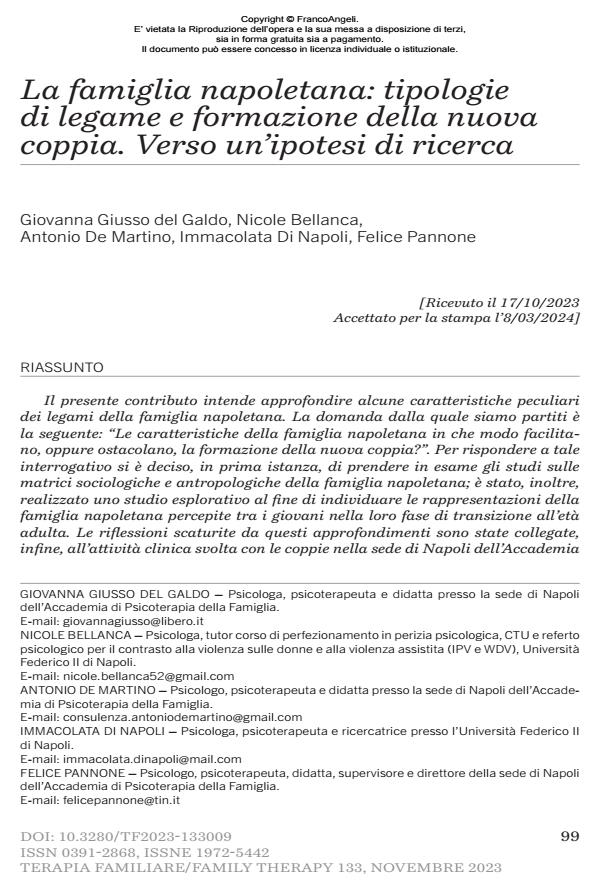The Neapolitan family: the types of ties and the formation of the new couple. Towards a research hypothesis
Journal title TERAPIA FAMILIARE
Author/s Giovanna Giusso del Galdo, Nicole Bellanca, Antonio De Martino, Immacolata Di Napoli, Felice Pannone
Publishing Year 2024 Issue 2023/133
Language Italian Pages 20 P. 99-118 File size 663 KB
DOI 10.3280/TF2023-133009
DOI is like a bar code for intellectual property: to have more infomation
click here
Below, you can see the article first page
If you want to buy this article in PDF format, you can do it, following the instructions to buy download credits

FrancoAngeli is member of Publishers International Linking Association, Inc (PILA), a not-for-profit association which run the CrossRef service enabling links to and from online scholarly content.
The present contribution intends to deepen some peculiar characteristics of the Neapolitan family’s ties. The question we started from is the following: “How do the characteristics of the Neapolitan family facilitate, or hinder, the formation of the new couple?”. In the first instance, answering this question it was decided to examine the studies on the sociological and anthropological matrices of the Neapolitan family; furthermore, an exploratory study was carried out in order to identify the representations of the Neapolitan family perceived among young people in their transition to adulthood. Finally, the reflections resulting from these insights were linked to the clinical activity carried out with couples in the Naples headquarters of the Family Therapy Academy, identifying a specific bonding modality of the Neapolitan family and outlining a future research hypothesis, eminently clinical.
Keywords: Neapolitan family, couple, family therapy, systemic-relational approach, exploratory study, centripetal tie.
Giovanna Giusso del Galdo, Nicole Bellanca, Antonio De Martino, Immacolata Di Napoli, Felice Pannone, La famiglia napoletana: tipologie di legame e formazione della nuova coppia. Verso un’ipotesi di ricerca in "TERAPIA FAMILIARE" 133/2023, pp 99-118, DOI: 10.3280/TF2023-133009